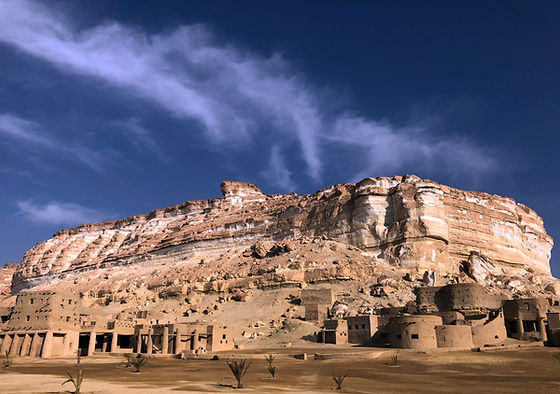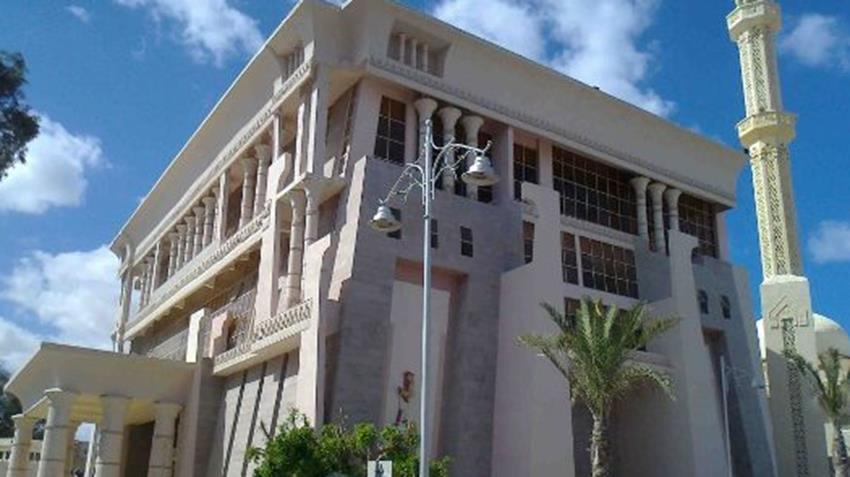
Introduction
Overview of Matrouh‘s Archaeological Marvels
Matrouh, a lesser-known gem of Egypt, bursts with archaeological treasures that whisper tales of ancient civilizations. It’s genuinely a delight to wander through its historical sites. From ancient temples to magnificent ruins, there’s so much to uncover:
- Diverse Historical Layers: Each site showcases remnants from various ancient eras.
- Unique Locations: Nestled between golden beaches and sweeping deserts, Matrouh offers breathtaking scenery alongside history.
- Rich Cultural Heritage: Traditions passed down through generations add depth to its archaeological landscape.
Significance of Matrouh in Egyptian History
Matrouh is not just a tourist destination; it plays a pivotal role in Egypt’s historical narrative. I remember being in awe as I learned about its significance during my visits. Some highlights that struck me include:
- Strategic Location: Matrouh’s positioning connects various ancient trade routes.
- Cultural Melting Pot: Influences from the Greeks, Romans, and indigenous peoples create a rich tapestry.
Exploring Matrouh is like stepping back in time, uncovering Egypt’s compelling past layer by layer.

The Ancient City of Oxyrhynchus
History and Rediscovery
Transitioning from Matrouh’s rich backdrop, let’s delve into the captivating tale of the ancient city of Oxyrhynchus. This once-thriving urban center, named after the sacred fish, has a history that’s fascinating in its complexity.
- Ancient Significance: Founded during the Hellenistic period, Oxyrhynchus became a major intellectual hub.
- Rediscovery: Its post-ancient life was shadowed until the late 19th century, when explorers stumbled upon its ruins, revealing a buried treasure trove of ancient texts.
During my visit, I couldn’t help but feel the excitement that archaeologists must have felt upon unearthing such a significant site.
Excavations and Findings
As excavations continued, the findings were nothing short of extraordinary. It was thrilling to witness firsthand the remnants that have shaped our understanding of this ancient civilization.
- Papyri Discoveries: Thousands of papyrus texts were found, offering insights into daily life, politics, and literature from ancient Egypt.
- Architectural Wonders: Remarkable structures like temples and public buildings paint a vivid picture of the city’s grandeur.
I vividly remember standing next to the partially unearthed temple, marveling at the craftsmanship of ancient artisans. Oxyrhynchus stands as a testament to Egypt’s diverse history, reminding us of its profound legacy.

The Roman Ruins of Taposiris Magna
Exploration and Unearthing
Building on Oxyrhynchus’ astonishing revelations, let’s head to the intriguing ruins of Taposiris Magna. This site offers a mesmerizing glimpse into Roman Egypt, where every stone tells a story.
- Historical Context: Founded during the Ptolemaic period and later becoming an important Roman city, Taposiris Magna evokes intrigue.
- Recent Excavations: Archaeological teams have been delving into its depths, unveiling stunning artifacts and structures, sparking excitement in every corner of the site.
As I wandered through the ancient pathways, I couldn’t shake the feeling that I was walking in the footsteps of history, each ruin resonating with untold stories.
Temple of Isis and Mysteries
At the heart of Taposiris Magna lies the Temple of Isis, steeped in mythology and devotion. The air felt charged with mystery as we approached this magnificent site.
- Sacred Significance: The temple was dedicated to the goddess Isis, who symbolized fertility and motherhood, making it a pilgrimage site for many.
- Unique Architectural Features: Stunning columns and intricate designs reveal the art and craftsmanship of the time.
I remember standing beneath a grand archway, where whispers of ancient rituals seemed to echo in the wind. The Temple of Isis serves as a captivating reminder of Taposiris Magna’s spiritual significance in Egyptian history, inviting exploration and curiosity.

The Greco-Roman City of Hawara
Architectural Features
Continuing our journey through Egypt’s spellbinding ruins, we arrive at the Greco-Roman city of Hawara. This ancient site showcases remarkable architecture that perfectly blends Greek, Roman, and Egyptian influences.
- Distinctive Designs: The layout of Hawara features impressive structures, including large public buildings and intricately designed temples that are still recognizable today.
- The Labyrinth: I was amazed to learn about the legendary labyrinth, a vast complex that once served both administrative and ritualistic purposes, echoing the grandeur of its time.
Walking through the remnants of Hawara, I felt a connection to the people who once walked these same paths, marveling at their ingenuity and artistry.
Mummy Portraits and Culture
Hawara is also renowned for its stunning mummy portraits, adding a unique layer to our understanding of ancient Egyptian culture.
- Fayum Mummy Portraits: This art form combines realism and idealism, creating exquisite likenesses of individuals placed on their mummies, which showcased their status and personality.
- Cultural Insights: The portraits reflect a mingling of traditions, illustrating how Greco-Roman styles influenced Egyptian burial customs.
As I admired these faces from centuries past, I felt an overwhelming sense of connection to the lives they represented—hopes, dreams, and stories that persist long after their time. Hawara stands as a powerful testament to Egypt’s rich cultural tapestry, intertwining lives across history.

The Ancient Port City of Thonis-Heracleion
Submerged Treasures
As we shift our focus to the enchanting stories below the waves, let’s dive into the ancient port city of Thonis-Heracleion. This once-thriving metropolis rested silently beneath the Mediterranean, preserving some remarkable treasures.
- Rediscovery: Rediscovered in the early 2000s, underwater archaeologists uncovered a wealth of artifacts, including statues, coins, and pottery.
- Fascinating Findings: One of my favorite discoveries has to be the stunning granite statues of Egyptian deities, which seem to gaze out across centuries of change.
Walking along the shoreline, I imagined the vibrant life that once filled the bustling port, where trade routes met and cultures intertwined.
Link to Pharaonic Era
Thonis-Heracleion is not merely a portal to the past; it holds significant ties to Egypt’s Pharaonic era, acting as a gateway to ancient Egypt’s connections with the world.
- Cultural Exchange: It served as a major trade hub between Greece and Egypt, facilitating the exchange of goods, culture, and ideas.
- Historical Influence: The city played a role in establishing the Ptolemaic dynasty’s trade routes, reinforcing its influence throughout the Mediterranean.
I distinctly recall the moment I learned about the city’s pivotal role in ancient trade. The bustling markets and lively exchanges felt so real, a reminder of how civilization flourished against the backdrop of the Nile. Thonis-Heracleion continues to echo voices of the past, enriching our understanding of Egypt’s extensive history.

The Temple of Qasr el-Agouz
Religious Importance
Continuing our journey through Egypt’s mesmerizing historical sites, we arrive at the Temple of Qasr el-Agouz, a place where faith and devotion have left their indelible mark over the centuries.
- Devotion to Amun: This temple was dedicated to Amun, one of ancient Egypt’s foremost deities, signifying its importance in local religious practices.
- Pilgrimage Destination: For centuries, it attracted worshippers and pilgrims, embodying spiritual significance that transcended geographical boundaries.
Standing at the temple’s entrance, I felt a rush of reverence as I imagined the countless individuals who had come here seeking connection with the divine before me.
Architectural Beauty
Beyond its religious significance, the architectural splendor of Qasr el-Agouz is simply breathtaking.
- Intricate Designs: The temple showcases exquisite craftsmanship, with delicate carvings depicting various deities and rituals, a testament to the artisans of the time.
- Symbolic Layout: Its layout reflects ancient Egyptian cosmology, arranged thoughtfully to represent the world of the gods and their connection to humanity.
I remember tracing my fingers along the weathered stone walls, feeling the textures of ancient artistry. Each curve and contour seemed to tell a story, revealing the commitment and skill of those who built it. The Temple of Qasr el-Agouz stands not just as a place of worship, but also as a stunning tribute to the architectural prowess and cultural depth of ancient Egypt.

The Tombs of Al-Nagila
Burial Customs
As we transition from the magnificent Temple of Qasr el-Agouz, we now explore the intriguing Tombs of Al-Nagila, a site that offers an intimate glimpse into ancient burial practices.
- Intricate Burial Processes: The tombs reveal a fascinating array of customs, including elaborate mummification techniques meant to preserve the body for the afterlife.
- Rich Offerings: Artifacts found alongside the deceased, such as pottery and jewelry, illustrate the importance of providing for the journey beyond death.
Walking through the tomb pathways, I was struck by the solemnity of this site, reflecting the deep reverence that ancient Egyptians held for their dead and the afterlife.
Hieroglyphic Inscriptions and Artworks
Beyond the burial rituals, the artistic expressions within the Tombs of Al-Nagila are nothing short of breathtaking, showcasing the rich culture of ancient Egypt.
- Storytelling through Hieroglyphs: The walls are adorned with intricate hieroglyphic inscriptions, narrating the life story and accomplishments of the individuals buried there.
- Vibrant Artworks: Colorful frescoes depict everyday life, religious rituals, and deities, creating a vivid tableau of the beliefs and values of the time.
I remember standing in awe, gazing at the vibrant colors and detailed depictions that seemed to breathe life into the past. The Tombs of Al-Nagila serve as not only burial sites but also as crucial cultural artifacts, preserving the thoughts, lives, and aspirations of a civilization that continues to captivate us today.
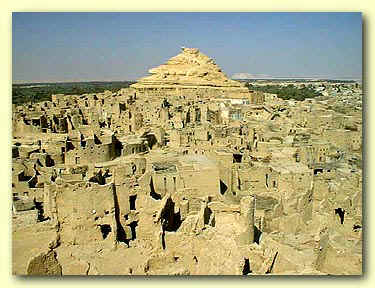
The Fort of Siwa Oasis
Defensive Structures
Moving from the evocative Tombs of Al-Nagila, we now journey to the rugged beauty of the Fort of Siwa Oasis. Nestled amidst the desert, this fortification tells a tale of resilience and defense.
- Historic Walls: Built from local mud bricks, the fort’s walls are both sturdy and perfectly camouflaged within the surrounding landscape.
- Strategic Architecture: The design includes lookout towers and narrow passages, allowing defenders to spot potential threats from afar.
During my visit, I couldn’t help but admire the sheer ingenuity of the builders. Standing atop the walls, I felt as though I was peering into a past where survival depended on such strongholds.
Strategic Positioning
The location of the Fort of Siwa Oasis is as remarkable as its structure, offering insights into ancient geographical tactics.
- Trade Routes: Siwa served as a crucial checkpoint on ancient trade routes, linking Egypt to other North African territories and ensuring control over commerce.
- Natural Barriers: The fort is strategically positioned among natural depressions and palm groves, providing cover while monitoring the movements of both allies and adversaries.
I recall standing amidst the palm trees, feeling a profound connection to the landscape that not only shaped the history of Siwa but also the stories of those who defended it. The Fort of Siwa Oasis continues to be a symbol of strength and adaptability, a breathtaking testament to the vibrant tapestry of Egypt’s history.

The Monastery of St. Macarius
Christian Heritage
Continuing our exploration, we find ourselves at the Monastery of St. Macarius, a vital landmark in Egypt’s Christian heritage. Nestled in the serene landscapes of the Western Desert, this monastery has a rich history that spans centuries.
- Historical Significance: Founded in the 4th century, it became a hub for Christian ascetics, serving as a place of refuge and spiritual growth.
- Pilgrimage Destination: Many come to seek solace and connect with the monastic traditions that flourished here, experiencing a deep sense of spirituality and peace.
While walking through the monastery’s tranquil grounds, I was struck by the profound sense of calm—a perfect backdrop for reflection and prayer.
Manuscripts and Artifacts
The Monastery of St. Macarius is also home to an impressive collection of manuscripts and artifacts, adding to its historical allure.
- Ancient Manuscripts: Scriptural texts and theological writings dating back to early Christianity reveal the monastery’s role in the preservation of Christian doctrine and heritage.
- Artifacts of Daily Life: Utensils, pottery, and religious items unearthed from the site offer insightful glimpses into the daily lives of monks during the early Christian era.
I remember being captivated by one ancient manuscript, its pages delicate yet filled with wisdom. It’s as if those early voices still resonate today, whispering stories of faith. The Monastery of St. Macarius is more than just a historical site; it stands as a powerful reminder of the enduring spirit of Christianity in Egypt.
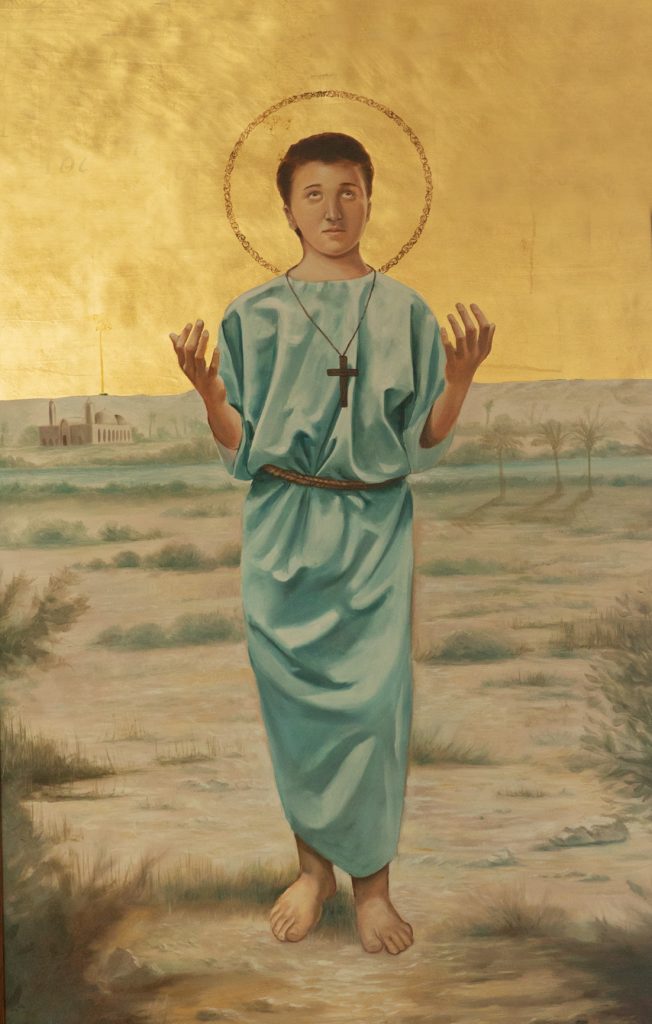
The Coptic Church of St. Abanoub
Relics and Miracles
As we leave behind the serene atmosphere of the Monastery of St. Macarius, our journey brings us to the Coptic Church of St. Abanoub, a site rich with stories of faith and devotion.
- Sacred Relics: Within the church, you’ll find relics that are believed to belong to St. Abanoub himself, known for his acts of kindness and healing.
- Miraculous Accounts: Many visitors have reported miraculous events associated with these relics, reinforcing the church’s significant place in the hearts of local and international worshippers.
I was deeply moved by the palpable sense of reverence in the air as fellow pilgrims gathered to offer prayers and seek blessings. Each story shared seemed to weave a tapestry of faith that spanned generations.
Pilgrimage Site
The Coptic Church of St. Abanoub has long been recognized as a pilgrimage site, drawing people from diverse backgrounds in search of spiritual growth and healing.
- Annual Celebrations: The church hosts annual festivities that attract large gatherings, where worshippers participate in prayers, hymns, and processions that celebrate St. Abanoub’s life.
- Spiritual Reflection: Visitors often describe their time here as transformative, offering a unique opportunity to reflect on their faith amidst the calming presence of the church.
I recall my own sense of peace and reflection as I wandered the church’s serene halls, each corner infused with stories of hope. The Coptic Church of St. Abanoub is not just a landmark; it’s a sanctuary for many, representing the enduring power of faith throughout history.
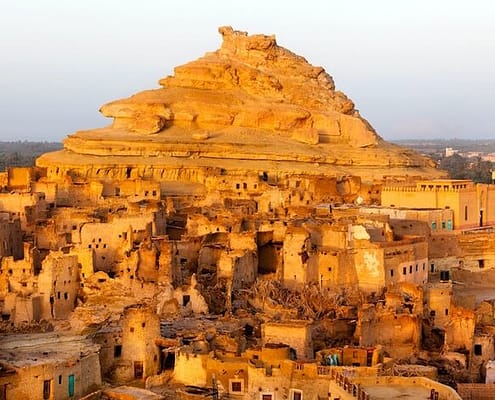
The Necropolis of Al-Bagawat
Ancient Cemetery
Transitioning from the sacred atmosphere of the Coptic Church of St. Abanoub, we now arrive at the Necropolis of Al-Bagawat, a remarkable ancient cemetery that reveals the burial traditions of early Christians in Egypt.
- Historical Significance: Dating back to the 4th century, this site is one of the oldest Christian cemeteries still in use, showcasing the evolving practices of burial and commemoration.
- Diverse Tomb Designs: Walking among the tombs, I marveled at the variety of styles, from simple structures to elaborately decorated graves, each one reflecting the personal stories of those interred there.
As I wandered through this quiet resting place, the weight of history felt palpable — a reminder of the deep roots of Coptic Christianity.
Coptic Wall Paintings
What makes Al-Bagawat truly extraordinary is its stunning Coptic wall paintings, which provide a glimpse into the artistic and spiritual lives of early Christians.
- Vivid Imagery: The paintings, rich in color and symbolism, depict scenes from biblical stories, saints, and various religious motifs, providing insights into the beliefs and practices of the time.
- Artistic Preservation: Many of these artworks have been remarkably preserved, allowing visitors like myself to connect with the spiritual and cultural heritage of the Coptic community.
I was particularly captivated by one striking fresco, its image of St. George slaying the dragon evoking themes of heroism and faith. The Necropolis of Al-Bagawat is more than just a burial site; it’s a vibrant testament to the enduring legacy of Coptic art and devotion, inviting reflection on both life and afterlife in ancient Egypt.
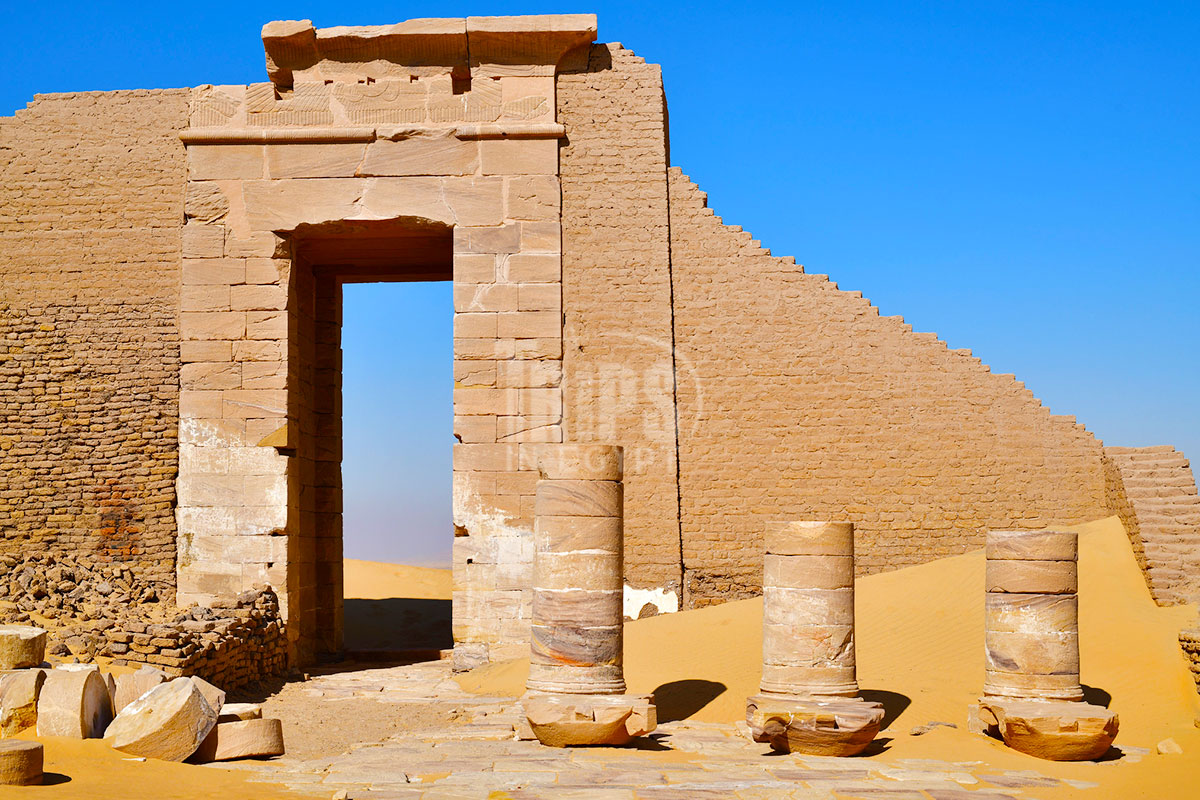
The Temples of Kharga Oasis
Temple of Hibis
Continuing our exploration of Egypt’s rich historical tapestry, we now venture into the Kharga Oasis, where ancient temples tell tales of worship and architectural ingenuity. One must-see site is the Temple of Hibis, a stunning relic of the past.
- Historical Context: Constructed during the 26th Dynasty, this temple was dedicated to Amun and is renowned for its impressive size and intricate designs.
- Architectural Marvel: Upon entering, I was awestruck by the grand columns and beautifully preserved reliefs that depict scenes of offerings and rituals, honoring the god Amun.
Strolling through the temple, it felt as if I was transported back in time, witnessing the reverence people held for their deities.
Temple of Dush
Not far from Hibis lies the Temple of Dush, another architectural gem in the Kharga Oasis that is steeped in history and spirituality.
- Unique Design: Unlike Hibis, this temple holds a more simple yet striking appearance, with a layout that reflects its purpose as a site for religious ceremonies and rituals.
- Cultural Significance: The temple was dedicated to the goddess Isis, highlighting the blend of religious practices that characterized the region.
While exploring Dush, I felt a special quietude, enhanced by the serenity of the surroundings. It was as if the spirit of the ancient worshippers lingered in the air. The Temples of Kharga Oasis serve as significant cultural touchstones, offering rich insights into the spiritual life of ancient Egyptians while standing resilient amidst the desert landscape.
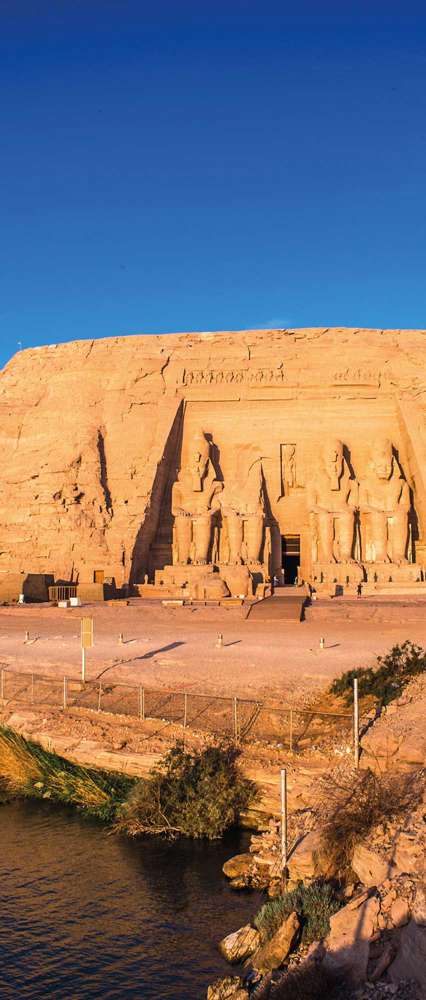
The Fortress of Alamein
Military History
Shifting our focus from the serene temples of Kharga Oasis, we arrive at the historic Fortress of Alamein, a site brimming with military significance and storied past.
- Strategic Location: Located along the North African coastline, Alamein has witnessed numerous historical conflicts, serving as a crucial battleground in ancient and modern times.
- Architectural Fortification: The fortress itself was built to withstand invasions, showcasing impressive defenses that reflect the military craftsmanship of its time.
As I stood on the ancient stone walls, the echoes of soldiers’ footsteps seemed to resound through history, amplifying the stories of bravery and strategy that unfolded here.
World War II Significance
Alamein’s most profound significance, however, lies in its role during World War II, marking it as a pivotal moment in the war’s North African Campaign.
- Famous Battles: The battles of El Alamein in 1942 were turning points in the conflict, where Allied forces decisively halted the advance of Axis powers.
- Memorials and Legacy: Today, the site is home to various memorials and cemeteries that honor the bravery of soldiers from both sides, reflecting the sacrifices made during this turbulent time.
I remember feeling a heavy sense of history as I walked through the memorials, each stone representing a life lost and a testament to the resilience of those who fought. The Fortress of Alamein stands not just as a military fortification, but as a solemn reminder of the trials of war and the enduring hope for peace.

The Rock Tombs of Adrere Amellal
Bedouin Connections
Transitioning from the historical significance of the Fortress of Alamein, we find ourselves at the captivating Rock Tombs of Adrere Amellal, a fascinating site where ancient traditions meet modern Bedouin culture.
- Cultural Heritage: These rock-cut tombs have been used for centuries, showcasing the enduring connection between the local Bedouin tribes and their ancestors.
- Community Insight: While visiting, I learned about how the Bedouin people continue to honor their heritage through storytelling, music, and traditional crafts, preserving their history even in the face of change.
As I chatted with the locals, their connection to the land and its history felt palpable, enriching my understanding of their way of life.
Rock Art and Inscriptions
One of the most captivating aspects of Adrere Amellal is its remarkable rock art and inscriptions, which provide insights into the lives of those who walked this land long before us.
- Depictions of Daily Life: The rock art features vivid imagery of animals, hunting scenes, and human figures, shedding light on the daily activities, beliefs, and environments of ancient inhabitants.
- Cultural Significance: Many inscriptions carry symbolic meanings, with local guides sharing stories that bring these ancient drawings to life.
I was particularly struck by one expansive mural of a herd of gazelles, which seemed to leap off the rock face. It evoked a profound sense of wonder about the artists’ lives and the world they inhabited. The Rock Tombs of Adrere Amellal stand as a testament to the seamless weave of history and culture, inviting exploration and introspection into our shared human journey.

Conclusion
Preservation Efforts
As we conclude our exploration of Egypt’s remarkable historical sites, it’s vital to acknowledge the ongoing preservation efforts dedicated to safeguarding these treasures for future generations.
- International Collaboration: Various organizations and governments work together to restore and protect ancient sites, ensuring their integrity amidst modern challenges.
- Community Engagement: Locals are also involved, fostering a sense of ownership and responsibility toward their heritage.
During my travels, I saw firsthand the dedication of archaeologists and historians striving to preserve Egypt’s legacy, making our visits more enriching and meaningful.
Continuing Discoveries
Amidst these preservation efforts, the allure of continuing discoveries in Egypt remains undeniable.
- Ongoing Excavations: Archaeological digs are unearthing new artifacts and structures regularly, revealing layers of history that enhance our understanding of ancient civilizations.
- Public Interest: The excitement surrounding new findings has sparked greater public interest in Egyptology, inspiring travelers and scholars alike.
I remember the thrill I felt visiting an active excavation site, where the promise of uncovering new history was almost tangible in the air. Egypt’s rich tapestry of history continues to unfold, inviting us to participate in the ongoing journey of discovery, connection, and appreciation that fuels our fascination with this incredible land.

